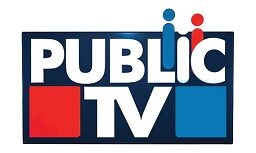Understanding Options Trading
3 min read
Options trading exchanges are how financial backers can guess the future heading of the general securities exchange or individual protections, similar to stocks or bonds. Choices contracts give you the decision — however, not the commitment — to trade a hidden resource at a predetermined cost by a predefined date.
What Are Options Trading?
Choices are tradable agreements that financial backers use to estimate whether a resource’s cost will be higher or lower at a specific date from now on, with next to no prerequisite to purchase the resource being referred to.
Clever 50 choices, for instance, permit merchants to guess the future heading of this benchmark stock file, which is generally perceived as a substitute for the whole Indian securities exchange using charges for opening demat account.
From the get-go, choices appear somewhat outlandish; however, they’re more concise than they arise. To comprehend choices, you have to know a couple of key terms:
Subsidiary. Options Trading was known as a subsidiary, implying that they get their worth from another resource. Take investment opportunities, where the cost of a provided stock directs with the value of the choice agreement.
Call choice and put choice. A call choice offers you the chance to purchase a security at a foreordained cost by a predetermined date, while a put choice permits you to sell a security sometimes not too far off and in cost.
Strike cost and termination date. They are known as strike values that foreordained the price referenced above. Brokers have until a choice agreement’s termination date to practice the choice at its strike cost.
Premium. The cost to buy a choice is known as a premium, determined in light of the basic security’s cost and values using charges for opening demat account.
Inborn worth and outward worth with Options Trading. Inherent worth is the distinction between a choice agreement’s strike cost and the current cost of the hidden resource. Outward worth addresses elements beyond those considered in characteristic worth that influence the top-notch, similar to how long the choice is excellent for.
In-the-cash and out-of-the-cash. Contingent upon the hidden security’s cost and the time staying until lapse, a choice is supposed to be in-the-cash (productive) or out-of-the-cash (unfruitful).
How Choices Exchanging Functions
You can convey a scope of choices exchanging methodologies from a direct way to deal with many-sided, convoluted exchanges. Call choices are how you bet on rising costs, while trading put choices is a method for wagering on falling prices using Options Trading.
Choice exchanging permits you to conjecture on:
- Whether a resource’s cost will rise or tumble from its ongoing cost.
- By how much a resource’s cost will increase or fall.
- By what date these value changes will happen for the Options Trading?
Options Trading allow financial backers to trade at least 100 portions of stock or different resources. Be that as it may, there’s no commitment to practice choices when an exchange isn’t productive. Not practicing choices implies the leading cash a financial backer can lose is the premium paid for the agreements. Therefore, choice exchanging can be a generally minimal expense method for guessing on an entire scope of resource classes using charges for opening demat accounts.






